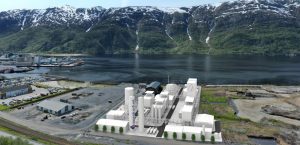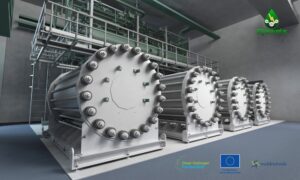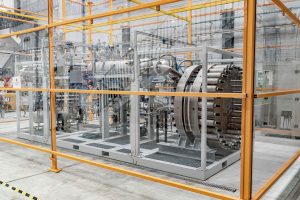SAF+ brings together a coalition of leading international players from across the aviation value chain. In July 2023, the company announced the signature of a memorandum of understanding with the Air France-KLM Group for the supply of second-generation e-SAF fuel, with the first deliveries scheduled for 2030.
As part of this memorandum of understanding, Lhyfe and SAF+ plan to assess the potential for developing e-SAF production in the Le Havre area and to sign a co-development agreement.
The partners are aiming for a facility in the port region of Le Havre, where Lhyfe would build a green hydrogen production site with a capacity of more than 100 tonnes per day (300 MW of installed electrolysis capacity) to supply an e-SAF production site that SAF+ is planning to build. This industrial complex would be connected to the hydrocarbon transport network in order to transport the e-SAF obtained from Le Havre to airports in the Paris region, as well as in northern and eastern France via the existing infrastructure.
Jean Paquin, CEO of SAF+, said: “This agreement between Lhyfe and SAF+ shows our shareholders and stakeholders that our European strategy is well on track. Demand for SAF in the coming years will be exponential, so we now need to be able to demonstrate that viable solutions will be put in place in the short term. The partnership signed today between two leaders like Lhyfe and SAF+ is proof that we can achieve these objectives.”
Matthieu Guesné, Founder and CEO of Lhyfe, added: “Through this ambitious agreement with SAF+, we are demonstrating our determination to help decarbonise not only industry and road transport, but also air transport, which in 2020 accounted for 2.9% of global CO2 emissions. Green and renewable hydrogen is now a mature solution that has established itself as one of the pillars of decarbonisation. It can and must now be deployed as quickly as possible, including in the aviation industry.”






